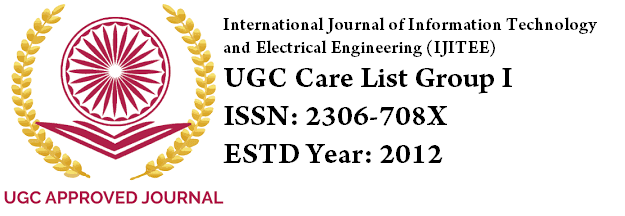ADAPTIVE MULTILAYER ARCHITECTURES FOR INTELLIGENT EDGE COMPUTING LEVERAGING FEDERATED LEARNING AND ENERGY-EFFICIENT NEURAL OPTIMIZATION IN DISTRIBUTED ELECTRICAL SYSTEMS
Keywords:
Edge computing, federated learning, neural optimization, energy efficiency, distributed systems, IoT, smart grid, adaptive architectureAbstract
As the demand for real-time data processing and decentralized intelligence grows, intelligent edge computing has emerged as a critical paradigm. This paper investigates adaptive multilayer architectures for edge computing that integrate federated learning (FL) with energy-efficient neural optimization strategies to address the challenges of scalability, latency, and power constraints in distributed electrical systems. We present a structured analysis of the interplay between edge intelligence, neuromorphic models, and distributed infrastructure, exploring architectural patterns that enable seamless learning across heterogeneous IoT nodes. Furthermore, we analyze key literature contributions, examine architectural designs, and evaluate future directions with a focus on sustainability, resilience, and autonomous operation.
References
Barua, M., et al. “Federated Learning Challenges in Smart Energy Networks.” Journal of Sustainable Computing, vol. 46, 2023, p. 100761.
Sankar Narayanan .S System Analyst, Anna University Coimbatore , 2010. PATTERN BASED SOFTWARE PATENT.International Journal of Computer Engineering and Technology (IJCET) -Volume:1,Issue:1,Pages:8-17.
Bonawitz, K., Eichner, H., Grieskamp, W., Huba, D., Ingerman, A., and Ivanov, V. “Towards Federated Learning at Scale: System Design.” Proceedings of MLSys, 2019.
Mukesh, V. (2022). Cloud Computing Cybersecurity Enhanced by Machine Learning Techniques. Frontiers in Computer Science and Information Technology (FCSIT), 3(1), 1-19.
Chen, J., Lin, K., and Li, C. “Edge Computing Empowered AI for Smart Grids: A Survey.” IEEE Internet of Things Journal, vol. 8, no. 4, 2021, pp. 2341–2365.
Chou, J., and Sorino, P. “Energy-Conscious Federated Learning for Industrial Edge Computing Systems.” Proceedings of the 9th International Conference on Smart and Sustainable Technologies (SpliTech), 2024.
Mukesh, V. (2024). A Comprehensive Review of Advanced Machine Learning Techniques for Enhancing Cybersecurity in Blockchain Networks. ISCSITR-International Journal of Artificial Intelligence, 5(1), 1–6.
Sankar Narayanan .S, System Analyst, Anna University Coimbatore , 2010. INTELLECTUAL PROPERY RIGHTS: ECONOMY Vs SCIENCE &TECHNOLOGY. International Journal of Intellectual Property Rights (IJIPR) .Volume:1,Issue:1,Pages:6-10.
He, C., Annavaram, M., and Avestimehr, S. “Group Knowledge Transfer: Federated Learning of Large CNNs at the Edge.” Advances in Neural Information Processing Systems, vol. 33, 2020.
Paramasivan, A. (2024). AI for seamless cross-border transactions: A new era for global card services. International Journal of Leading Research Publication (IJLRP), 5(5), 1–11.
Hsieh, Y. H., and Yuan, S. M. “Artificial Intelligence and Deep Learning in Sensors and Applications.” Sensors, vol. 25, no. 4, 2023, p. 1144.
Sankar Narayanan .S System Analyst, Anna University Coimbatore , 2010. PATTERN BASED SOFTWARE PATENT.International Journal of Computer Engineering and Technology (IJCET) -Volume:1,Issue:1,Pages:8-17.
Kairouz, P., McMahan, H. B., et al. “Advances and Open Problems in Federated Learning.” Foundations and Trends in Machine Learning, vol. 14, no. 1–2, 2021, pp. 1–210.
Kitanov, S., Kimovski, D., and Horvath, K. “Computing Continuum Trends for Distributed Intelligence.” Journal of Practical Cybersecurity, vol. 5, no. 2, 2023, pp. 203–221.
Mukesh, V., Joel, D., Balaji, V. M., Tamilpriyan, R., & Yogesh Pandian, S. (2024). Data management and creation of routes for automated vehicles in smart city. International Journal of Computer Engineering and Technology (IJCET), 15(36), 2119–2150. doi: https://doi.org/10.5281/zenodo.14993009
Li, T., Sahu, A. K., Talwalkar, A., and Smith, V. “Federated Learning: Challenges, Methods, and Future Directions.” IEEE Signal Processing Magazine, vol. 37, no. 3, 2020, pp. 50–60.
Paramasivan, A. (2024). AI-driven customer insights: Personalizing cardholder experience in the digital era. International Journal of Leading Research Publication (IJLRP), 5(3), 1–13.
Lofù, D., Sorino, P., and Di Noia, T. “Towards a Federated Intrusion Detection System Based on Neuromorphic Computing.” 2024 9th International Conference on Smart and Sustainable Technologies (SpliTech), IEEE, 2024.
Mathieu, P. Advances in Practical Applications of Agents, Multi-agent Systems, and Digital Twins. Springer, 2024.
Murthy, B., and Singh, H. “Edge AI Chip Architectures for Federated Learning.” ACM Transactions on Embedded Computing, 2023.
Shi, W., Cao, J., Zhang, Q., Li, Y., and Xu, L. “Edge Computing: Vision and Challenges.” IEEE Internet of Things Journal, vol. 3, no. 5, 2016, pp. 637–646.
Paramasivan, A. (2024). AI and digital twin technology: Personalized simulations for improving patient-specific treatment plans. International Journal on Science and Technology (IJSAT), 15(1), 1–19.
Wang, S., Tuor, T., Salonidis, T., Leung, K. K., Makaya, C., He, T., and Chan, K. “Adaptive Federated Learning in Resource Constrained Edge Computing Systems.” IEEE Journal on Selected Areas in Communications, vol. 37, no. 6, 2019, pp. 1205–1221.
Zhou, Z., Chen, X., Li, E., Zeng, L., Luo, K., and Zhang, J. “Edge Intelligence: Paving the Last Mile of Artificial Intelligence with Edge Computing.” Proceedings of the IEEE, vol. 107, no. 8, 2019, pp. 1738–1762.
Paramasivan, A. (2023). Transforming healthcare supply chains: AI for efficient drug distribution and inventory management. International Journal on Science and Technology (IJSAT), 14(3), 1–15.
Downloads
Published
Issue
Section
License
Copyright (c) 2025 Sapardi Djoko Damo (Author)

This work is licensed under a Creative Commons Attribution-NonCommercial 4.0 International License.

